Many people think cats are aloof at best and downright arrogant, calculated and self-centered at worst. Our two cats are loving and generous; my husband labels them as needy and killers.

Their generosity is apparent in their frequent gifts: lizards, rabbits, squirrels, snakes, rats, mice, shrews and the occasional bird.
We’ve been somewhat successful teaching them the catch-and-release program. They announce their offerings as they trot through the cat-flap door, so there’s no mistaking when a gift is forthcoming. Each cat has his own special look-what-I-have-for-you voice.
Izzy, the younger one, brings in moths, crickets, dragon flies, small snakes and lizards. I can grab him and pry his jaws apart to release the prey; my husband tends to the tiny snakes let loose in the house.
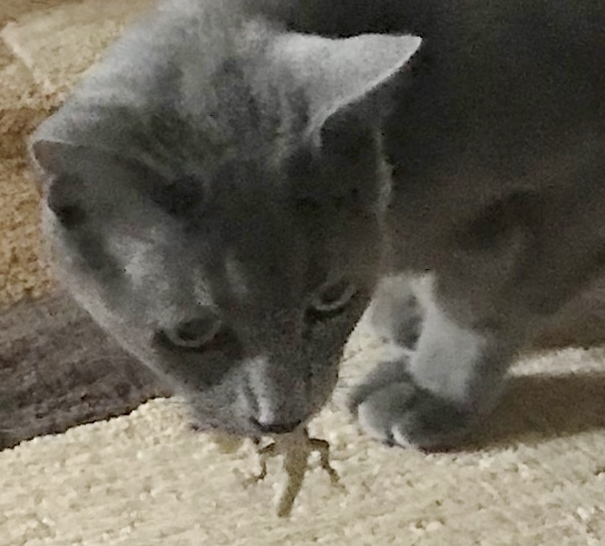
Alex brings in larger offerings and clamps his jaws with amazing strength, making it more difficult to prise open to release the captured critters. Rabbits, squirrels and rats generally only make it to the garage and are later found minus head and shoulders. Other times the cats play hide and seek with rats and lizards in the house.
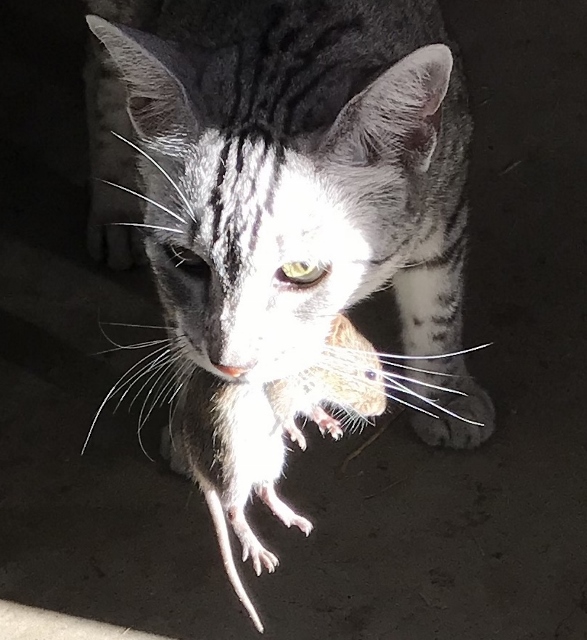
The latest surprise was after we retrieved the cats from a two-night kennel stay. They were so grateful to be back with us that they soon trotted up to the front door with a most generous offering in the mouth of the spotted cat: a big, beautiful, unharmed, curved-billed thrasher — not a small bird, having a length of 11.5 inches and a nearly 14-inch wingspan.
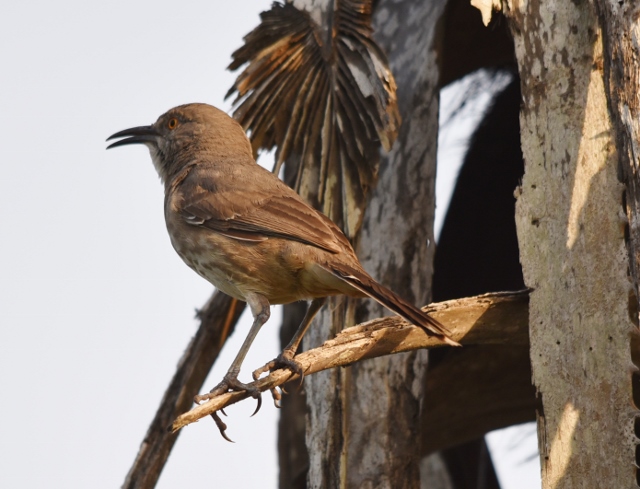
I grabbed Alex, got the bird loose — managed to capture the stunned bird in my hands — was about to turn to release it out the front door into the courtyard when the wily thing escaped my gentle grasp! Long story short, the bird spent the rest of the day and night behind the refrigerator.
The next morning, I went out to mow, heard the bird’s comrades calling for the lost bird and thought, too bad they aren’t louder so the bird in the house could hear and know that rescue was possible — and then! Inspiration hit!
I raced back to the house, grabbed my iPad and asked Siri, “What does the call of a curved-billed thrasher sound like?” Siri provided options immediately. I tapped up a U-tube of the bird singing and calling and played it near the fridge. I rallied my husband to come spot for me while I walked the singing iPad closer and closer to the back door. I sat it on the floor near the door, grabbed the fish net from its hook in the garage and passed it to my husband.
Within minutes, the errant bird was out in the kitchen and off to the great room where Morgan was able to whisk it up in the net and then free it outdoors into the denseness of a leafy tree. The thrasher immediately jetted off to join its friends in the yard.
December has been unusual in the birding community, not just in our kitchen, but in the yard and along the resaca. The other evening, we were easing down the driveway in the car toward the garage when we both spotted a flock of busy birds in the grass. My husband identified them instantly: Robins, just as I was about to say the same, although with more skepticism. I grabbed my phone and began taking photos. We put the car away, and I went back out with the camera and long lens. Yes, robins. And they’re still hanging around. A couple days later, they were in the orchard, pecking at things in the grass. Another day, across the resaca, they converged on the branches of a shoreline tree.
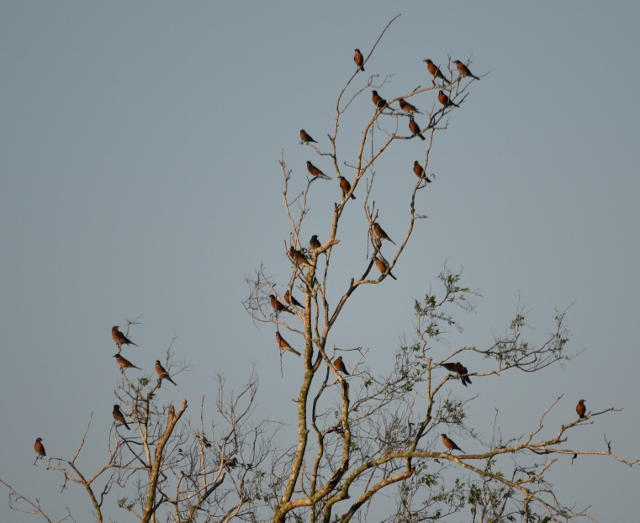
I’ve been envious lately of people in the Valley posting sightings of cedar waxwings, and it’s been on my bucket list of birds to photograph for several years. As I watched the robins, I noticed the hulk of a red-shouldered hawk in the next tree over. And then, flutters of white came into view and landed one by one in the tree with the hawk. I’m indoors at the kitchen sink, shooting through the glass at all the unexpected activity and photographing at least for ID purposes. I managed to get outdoors and fire off a few more shots. Later, with the images enlarged on my computer monitor, I knew instantly that I’d been granted a wish: cedar waxwings!

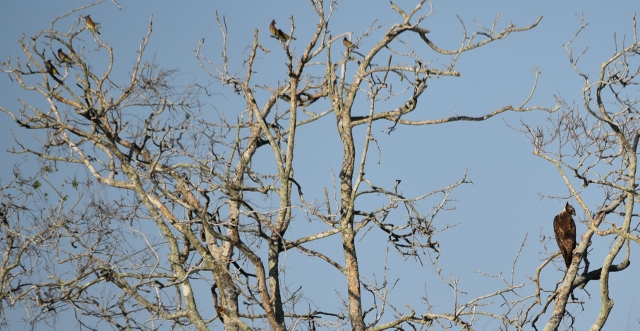
American robins, cedar waxwings and red-shouldered hawks overwinter in the Rio Grande Valley, although robins and red-shouldered hawks are permanent residents just north of here. Curve-billed thrashers are permanent residents in the Valley. Cedar waxwings are permanent residents in the northern U.S. states and into Canada.
American robins eat earthworms, insects and berries. Berries and fruits are their principal diet in winter.
Cedar waxwings feed close to other birds in trees or on the ground. They eat fruit, flower petals and insects, and drink sap. They will hawk insects, especially along streams.
Curve-billed thrashers search for insects by digging vigorously into the ground with their bill. They also eat spiders, small reptiles, snails, fruits, seeds and berries.
Red-shouldered hawks catch and eat small to medium-sized mammals, small reptiles, amphibians, large insects, spiders, earthworms, snails and an occasional bird. They prefer woodland, often near water and swamps. They often perch low to hunt on posts, utility poles and low to mid level in trees.
The above bird information is from Smithsonian Handbooks, “Birds of Texas,” Fred J. Alsop III, DK publishing,
I spied the hawk a couple of days later, just as the book said: sitting on a post.
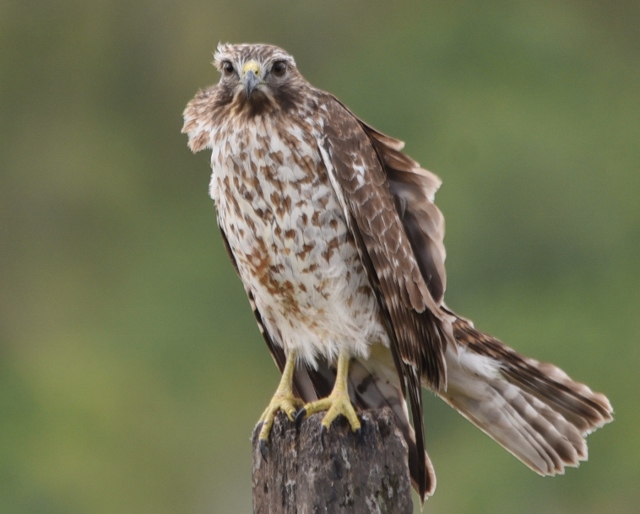
I crept slowly, hidden by a tree trunk, until I reached the mesquite branch I sometimes use as a camera support. I leveled the camera and snapped off a few shots when, without warning, something fell from the sky, landing softly on my trigger hand.
I reared back — it was in-your-face-Alex! I grabbed my phone and got off a quick shot before the culprit jumped to the ground and raced off with Izzy, who had sneaked up behind me.

Reminder: The Christmas Bird Count (CBC) occurs December 14 to January 5 every year. The Harlingen CBC is Saturday, January 2, 2021. Be a feederwatcher. Check it out: https://feederwatch.org/

Leave a Reply